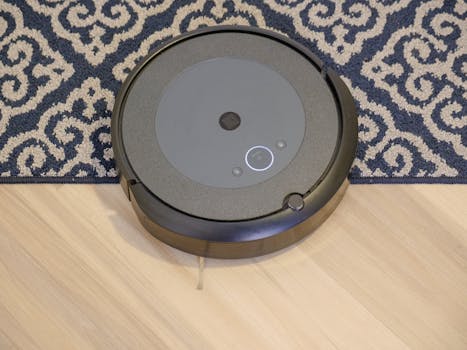
Smart Homes and Smart Living: The Technological Transformation of European Homes by 2025
Smart Homes and Smart Living are revolutionizing the way we live, work, and interact with our surroundings. The integration of cutting-edge technologies such as artificial intelligence, Internet of Things (IoT), and data analytics is transforming European homes into smart, efficient, and sustainable living spaces.
Introduction to Smart Homes and Smart Living
Smart homes and smart living refer to the use of advanced technologies to create a comfortable, convenient, and connected living environment. This includes the integration of various devices, systems, and services, such as lighting, heating, cooling, security, entertainment, and healthcare, into a single, cohesive platform.
Key Features of Smart Homes and Smart Living
- Energy Efficiency: Smart homes and smart living enable residents to monitor and control their energy consumption in real-time, optimizing energy usage and reducing waste.
- Convenience and Comfort: Smart homes and smart living provide residents with a high level of convenience and comfort, through features such as voice-controlled assistants, automated lighting and temperature control, and personalized entertainment systems.
- Enhanced Security: Smart homes and smart living offer advanced security features, including motion detection, video surveillance, and biometric authentication, to ensure the safety and security of residents and their property.
- Sustainability: Smart homes and smart living promote sustainable living practices, through the use of renewable energy sources, water conservation systems, and eco-friendly building materials.
Technological Advancements Driving Smart Homes and Smart Living
The development of smart homes and smart living is driven by several key technological advancements, including:
- Artificial Intelligence (AI): AI-powered systems enable smart homes and smart living to learn and adapt to the habits and preferences of residents, optimizing energy consumption, comfort, and convenience.
- Internet of Things (IoT): The IoT connects various devices and systems within the home, enabling seamless communication and control.
- Data Analytics: Advanced data analytics enable smart homes and smart living to analyze energy consumption patterns, detect anomalies, and predict maintenance needs.
- 5G Networks: The introduction of 5G networks provides high-speed, low-latency connectivity, essential for the smooth operation of smart homes and smart living.
Benefits of Smart Homes and Smart Living
The benefits of smart homes and smart living are numerous, including:
- Increased Energy Efficiency: Smart homes and smart living optimize energy consumption, reducing waste and lowering energy bills.
- Enhanced Convenience and Comfort: Smart homes and smart living provide residents with a high level of convenience and comfort, through features such as voice-controlled assistants and automated lighting and temperature control.
- Improved Security: Smart homes and smart living offer advanced security features, including motion detection, video surveillance, and biometric authentication, to ensure the safety and security of residents and their property.
- Increased Property Value: Smart homes and smart living can increase property value, making them more attractive to potential buyers and renters.
Challenges and Limitations of Smart Homes and Smart Living
While smart homes and smart living offer numerous benefits, there are also several challenges and limitations to consider, including:
- High Upfront Costs: The installation of smart home and smart living systems can be expensive, making them inaccessible to many consumers.
- Interoperability Issues: The integration of different devices and systems from various manufacturers can be challenging, leading to interoperability issues and compatibility problems.
- Security Concerns: Smart homes and smart living are vulnerable to cyber threats, including hacking and data breaches, which can compromise the security and privacy of residents.
- Dependence on Technology: Smart homes and smart living rely heavily on technology, which can be prone to failures and outages, leaving residents without access to essential services.
Conclusion
Smart homes and smart living are revolutionizing the way we live, work, and interact with our surroundings. By 2025, European homes will be transformed into smart, efficient, and sustainable living spaces, offering unprecedented levels of convenience, comfort, and security. While there are challenges and limitations to consider, the benefits of smart homes and smart living make them an attractive option for consumers seeking to upgrade their living experience.






